Seasonal Allergies
We love living in Michigan! The Big Lake, the sand dunes, the festivals, oh my! All of it is exciting but also typically brings its share of problems. Just when we say goodbye to the snow, and hello to tulip season, our pets begin scratching and licking. We often get calls this time of the year for pets that suffer from seasonal allergies. Ragweed, pollen, dust are all common environmental allergens which may cause your pet to be uncomfortable beginning in the spring until late autumn. You may see your pet constantly scratching (with no fleas in sight), licking their paws, or having red ears. For these types of allergies, your pet can often be treated with medication after an exam. Typically the medication can be used as needed to manage allergy symptoms, until the snow flies once again!
Food Allergies
Food allergies are quite common in pets . Ingredients such as beef and chicken by-products, dairy, soy, wheat, and corn can cause your pets to scratch frequently. In addition to itchy skin, food allergies can trigger gastrointestinal upset and ear inflammation. Pets with a food allergy may bite or scratch at their skin, frequently bite or lick their paws, and even drag their rear across the ground in an attempt to scratch it. Since pets with food allergies are often allergic to more than one food ingredient, diagnosing a food allergy can be a complicated yet worthwhile process. Diagnostic tests or an elimination diet may be necessary to precisely identify the cause for your pet’s allergies. Once the allergen triggers are identified, our doctors work closely with pet owners to create a custom treatment plan. Depending on the trigger, this may include a strict dietary change using one of the prescription foods and treats available in our store.
Allergic Dermatitis
In addition to treating pet allergies, our veterinary dermatology team also treats common skin conditions such as mange and ringworm. Ringworm is a common bacterial infection that can affect both cats and dogs. Pets with a ringworm infection have circular lesions on their limbs and head. The skin will be flaky and some pets may even appear to be “bald.” Ringworm can easily spread to other pets, so prompt treatment is critical. Mange is caused by tiny parasites called mites; symptoms of mange include intense scratching and biting of the skin. The doctors may suggest doing a "skin scraping" to analyze the condition of your pet's skin. Our veterinarians are looking for mites, yeast, or bacteria in the skin scraping. Once the problem has been identified, the doctor will prescribe a course of treatment. See further examples below of additional skin problems.
When to see your veterinarian
WebMD has compiled images of some of the most common canine skin problems (caution, some photos below are graphic). "Although most skin problems are not emergencies, it is important to get an accurate diagnosis so the condition can be treated. See your veterinarian if your dog is scratching or licking excessively, or if you notice any changes in your pet's coat or skin, including scaling, redness, discoloration, or bald patches. Once the cause is identified, most skin problems respond well to treatment."
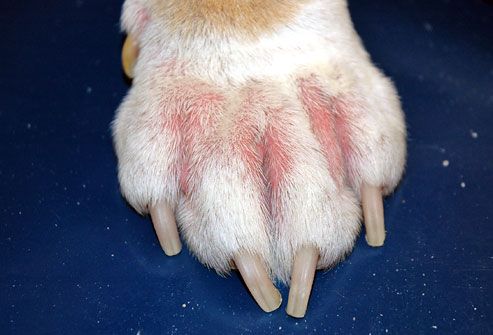
1. Allergic Dermatitis
Dogs can have allergic reactions to grooming products, food, and environmental irritants, such as pollen or insect bites. A dog with allergies may scratch relentlessly, and a peek at the skin often reveals an ugly rash. Corticosteroids or other, newer medicines can help with itchy rashes. But the most effective treatment is to identify and avoid exposure to the allergens.

2. Yeast Infection
If your dog can't seem to stop scratching an ear or licking and chewing her toes, ask your veterinarian to check for a yeast infection. Symptoms include irritated, itchy, or discolored skin. The infection usually strikes the paws or ears, where yeast have a cozy space to grow. Yeast infections are easy to diagnose and often respond well to a topical cream. In some cases, your veterinarian may prescribe oral drugs or medicated baths.
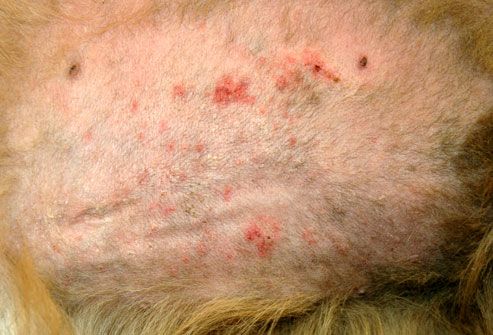
3. Folliculitis
Superficial bacterial folliculitis is an infection that causes sores, bumps, and scabs on the skin. These skin abnormalities are easier to see in shorthaired dogs. In longhaired dogs, the most obvious symptoms may be a dull coat and shedding with scaly skin underneath. Folliculitis often occurs in conjunction with other skin problems, such as mange, allergies, or injury. Treatment may include oral antibiotics and antibacterial ointments or shampoos.
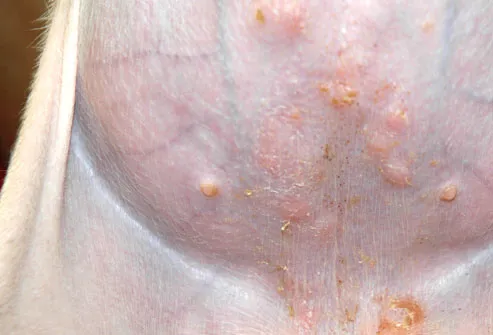
4. Impetigo
Another type of bacterial infection, impetigo is most common in puppies. It causes pus-filled blisters that may break and crust over. The blisters usually develop on the hairless portion of the abdomen. Impetigo is rarely serious and can be treated with a topical solution. In a small number of cases, the infection may spread or persist.

5. Seborrhea
Seborrhea causes a dog's skin to become greasy and develop scales (dandruff). In some cases, it's a genetic disease that begins when a dog is young and lasts a lifetime. But most dogs with seborrhea develop the scaling as a complication of another medical problem, such as allergies or hormonal abnormalities. In these cases, it is vital to treat the underlying cause so symptoms do not recur. The seborrhea itself typically can be treated with certain medicated shampoos.

6. Ringworm
Despite its name, ringworm is not caused by a worm, but by a fungus. The term "ring" comes from the circular patches that can form anywhere, but are often found on a dog's head, paws, ears, and forelegs. Inflammation, scaly patches, and hair loss often surround the lesions. Puppies less than a year old are the most susceptible, and the infection can spread quickly between dogs in a kennel or to pet owners at home. Various anti-fungal treatments are available.
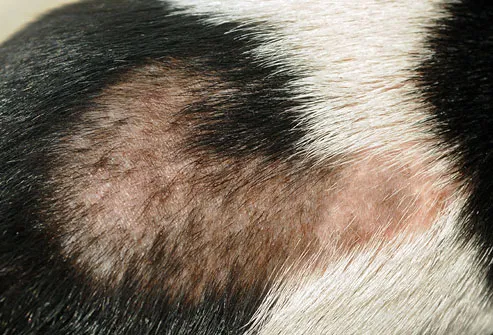
7. Shedding and Hair Loss (Alopecia)
Anyone who shares their home with dogs knows that they shed. How much shedding is normal depends on breed, time of year, and environment. But sometimes stress, poor nutrition, or illness can cause a dog to lose more hair than usual. If abnormal or excessive shedding persists for more than a week, or you notice patches of missing fur, check with your veterinarian.
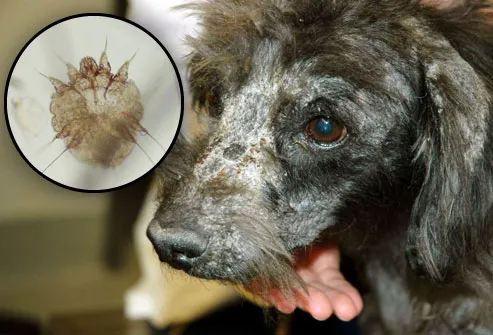
8. Mange (Mites)
Mange is a skin disorder caused by tiny parasites called mites. Sarcoptic mange, also known as canine scabies, spreads easily among dogs and can also be transmitted to people, but the parasites don't survive on humans. The symptoms are intense itching, red skin, sores, and hair loss. A dog's ears, face and legs are most commonly affected. Demodectic mange can cause bald spots, scabbing, and sores, but it is not contagious between animals or people. Treatment depends on the type of mange.
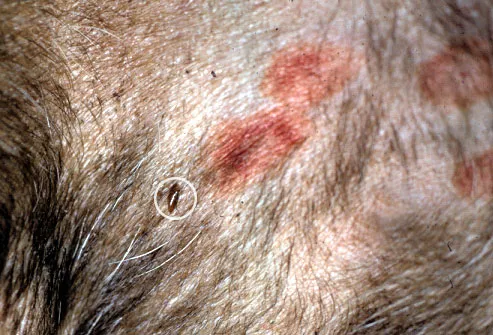
9. Fleas
Fleas are the bane of any pet owner. You may not see the tiny insects themselves, but flea droppings or eggs are usually visible in a dog's coat. Other symptoms include excessive licking or scratching, scabs, and hot spots. Severe flea infestations can cause blood loss and anemia, and even expose your dog to other parasites, such as tapeworms. Treatment may include a topical and/or oral flea killer and a thorough cleaning of the pet's home and yard. Robbins Road Animal Clinic veterinarians strongly recommend year-around flea and tick prevention.
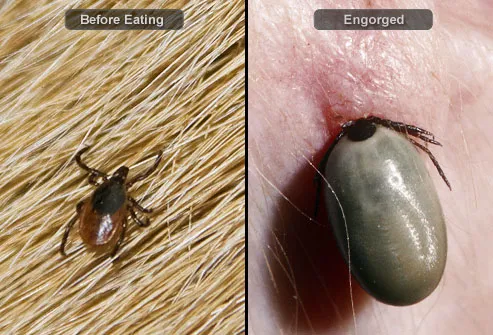
10. Ticks
Ticks, like fleas, are external parasites that feed on the blood of their hosts. You can spot a tick feeding on your dog with the naked eye. To properly remove a tick, grasp the tick with tweezers close to the dog’s skin, and gently pull it straight out. Twisting or pulling too hard may cause the head to remain lodged in your dog’s skin, which can lead to infection. Place the tick in a jar with some alcohol for a couple of days and dispose of it once it is dead. In addition to causing blood loss and anemia, ticks can transmit Lyme disease and other potentially serious bacterial infections. If you live in an area where ticks are common, talk to your veterinarian about tick control products. Robbins Road Animal Clinic veterinarians strongly recommend year-around flea and tick prevention.
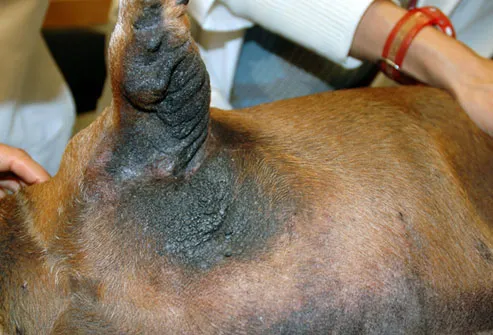
11. Color or Texture Changes
Changes in a dog's skin color or coat texture can be a warning sign of several common metabolic or hormone problems. They can also result from an infection or other skin disorder. Usually a simple blood test can identify the underlying cause. Be sure to ask your veterinarian about any significant changes to your dog’s coat.
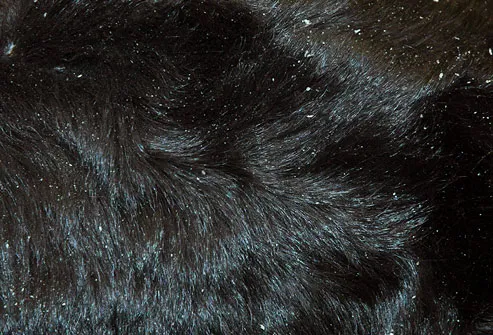
12. Dry, Flaky Skin
Dry, flaky skin can be a red flag for a number of problems. It's a common symptom of allergies, mange, and other skin diseases. But most often, dry or flaky skin is nothing serious. Make sure you are feeding Fido high quality food. Like people, some dogs simply get dry skin in the winter. If this seems to cause your pet discomfort, consult your veterinarian. Ask whether a fatty acid supplement or a humidifier might help.
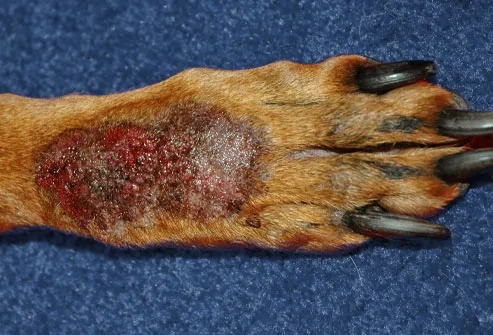
13. Acral Lick Granuloma
Also called acral lick dermatitis, this is a frustrating skin condition caused by compulsive, relentless licking of a single area -- most often on the front of the lower leg. The area is unable to heal, and the resulting pain and itching can lead the dog to keep licking the same spot. Treatment includes discouraging the dog from licking, either by using a bad-tasting topical solution or an Elizabethan collar. Also ask your dog's vet whether a medication like a topical or corticosteroid might help.
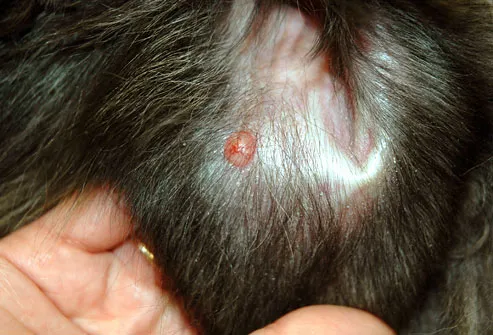
14. Skin Tumors
If you notice a hard lump on your dog's skin, point it out to your vet as soon as possible. Dogs can develop cancerous tumors in their skin. The only way to confirm a diagnosis of cancer is to biopsy the tumor. If the lump is small enough, your veterinarian may recommend removing it entirely. This can yield a diagnosis and treatment with a single procedure. For tumors that have not spread, this may be the only treatment needed.
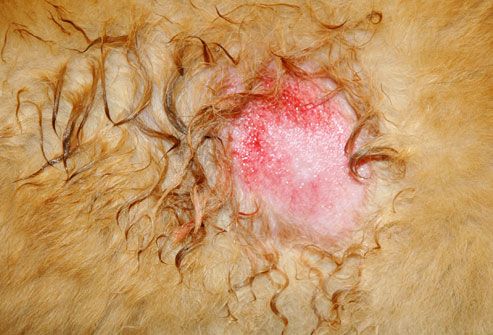
15. Hot Spots
Hot spots, also called acute moist dermatitis, are small areas that appear red, irritated, and inflamed. They are most commonly found on a dog's head, hips, or chest, and often feel hot to the touch. Hot spots can result from a wide range of conditions, including infections, allergies, insect bites, or excessive licking and chewing. Treatment consists of cleansing the hot spot and addressing the underlying condition.

16. Immune Disorders
In rare cases, skin lesions or infections that won’t heal can indicate an immune disorder in your dog. One of the best known is lupus, a disease that affects dogs and people. Lupus is an autoimmune disorder, meaning the body’s immune system attacks its own cells. Symptoms include skin abnormalities and kidney problems. It can be fatal if untreated.
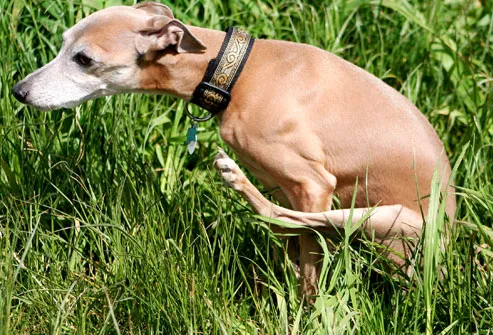
17. Anal Sac Disease
As if dog poop weren't smelly enough, dogs release a foul-smelling substance when they do their business. The substance comes from small anal sacs, which can become impacted if they don't empty properly. The hallmark of impacted anal sacs is a dog scooting his bottom along the ground. Other symptoms include biting or licking the anal area. A vet can manually express full anal sacs, but in severe cases, the sacs may be surgically removed. At RRAC, we regularly schedule Anal Gland Expressions with a Licensed Veterinary Technician at your convenience.

